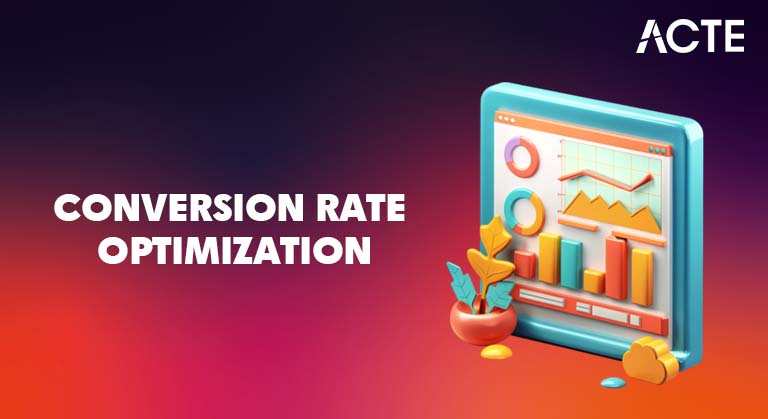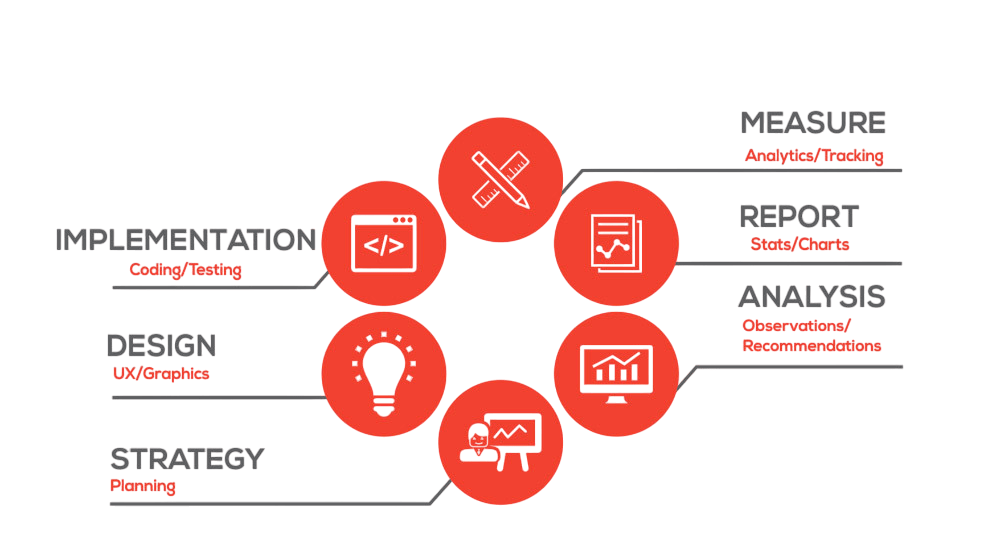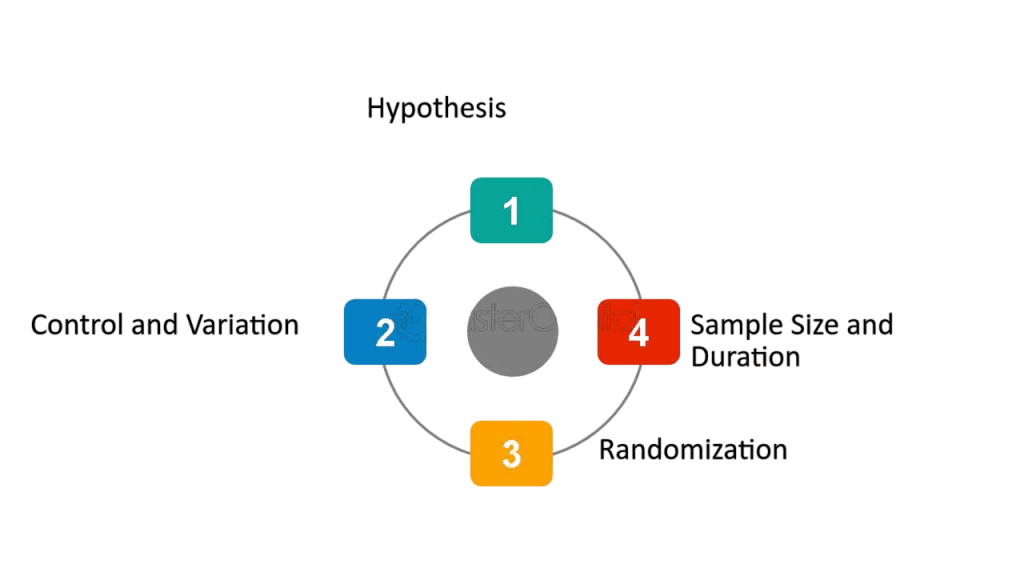
- Introduction to CRO
- Importance in Digital Marketing
- Understanding Conversion Metrics
- User Behavior Analysis
- A/B Testing Basics
- Improving Landing Pages
- Call-to-Action Optimization
- Funnel Optimization Techniques
- Conclusion
Introduction to CRO
Conversion Rate Optimization (CRO) is the process of increasing the percentage of users who take a desired action on a website, such as filling out a form, purchasing a product, or subscribing to a newsletter. CRO focuses on understanding user behavior, analyzing data, and making strategic changes to website design, content, Digital Marketing Training or functionality to encourage more conversions. This practice is grounded in psychology, data analysis, UX design, and testing techniques, aiming to improve the efficiency of digital marketing campaigns without increasing advertising budgets. At its core, Conversion Rate Optimization(CRO )involves optimizing digital touchpoints to better guide visitors toward completing a goal. This goal could be macro (such as a product purchase) or micro (such as clicking a CTA or downloading a whitepaper). CRO is iterative and data-driven, requiring consistent testing, feedback collection, and refining of user experiences. As competition intensifies in the digital space, CRO becomes a key lever for marketers and businesses seeking higher ROI from their online presence. Unlike driving more traffic, which often requires increased spend, Conversion Rate Optimization(CRO)enhances existing traffic’s value.
Ready to Get Certified in Digital Marketing? Explore the Program Now Digital Marketing Online Training Offered By ACTE Right Now!
Importance in Digital Marketing
- Wider Reach: Digital marketing allows businesses to connect with a global audience, reaching potential customers across borders without the limitations of physical location.
- Cost-Effective: Compared to traditional marketing methods, digital marketing is often more affordable, CC and BCC in Emails providing better ROI especially for small and medium-sized businesses.
- Targeted Advertising: Tools like Google Ads and social media platforms offer advanced targeting options based on demographics, interests, behavior, and location.
- Measurable Results: With analytics tools, businesses can track campaign performance in real time, monitor KPIs, and make data-driven decisions.
- Improved Conversion Rates: Through techniques like A/B testing, retargeting, and personalized content, digital marketing helps convert leads into customers more effectively.
- Brand Development: Consistent online presence through content marketing, SEO, and social media builds brand awareness, authority, and trust.
- Better Engagement: Digital channels allow two-way communication with customers, enabling businesses to build relationships, get feedback, and enhance customer loyalty.
- Competitive Advantage: Staying updated with digital trends ensures businesses remain relevant and competitive in a rapidly evolving market.
- Mobile Reach: With the rise in mobile device usage, digital marketing ensures brands are visible to consumers anytime, anywhere.
Understanding Conversion Metrics
Before diving into optimization, it’s crucial to identify and monitor the right conversion metrics. Primary metrics include conversion rate (total conversions divided by total visitors), bounce rate, Become a Content Writer average session duration, click-through rate (CTR), cart abandonment rate, and funnel drop-offs. Secondary metrics, such as exit pages and heatmap data, help provide deeper insight into where users struggle or lose interest. Understanding these metrics enables businesses to prioritize areas that need immediate improvement and track the success of Conversion Rate Optimization(CRO) efforts over time

Conversion metrics are essential in digital marketing as they help measure the effectiveness of campaigns in turning visitors into customers or leads. These metrics provide insight into user behavior, allowing marketers to determine what actions users take after interacting with an ad, website, or piece of content. Common conversion metrics include conversion rate, cost per conversion, and bounce rate. By analyzing these figures,Improving Landing Pages ,businesses can identify which strategies are driving results and which need improvement. Understanding conversion metrics also enables marketers to optimize landing pages, refine calls to action, and allocate budgets more efficiently. Ultimately, tracking and interpreting these metrics is crucial for making informed decisions and maximizing return on investment (ROI) in digital marketing efforts.
To Explore Digital Marketing in Depth, Check Out Our Comprehensive Digital Marketing Training To Gain Insights From Our Experts!
User Behavior Analysis
- Tracks How Users Interact: Analyzes clicks, scrolls, time spent, and navigation paths on a website or app.
- Identifies User Intent: Helps determine what users are looking for and how effectively your content or product meets their needs.
- Improves User Experience (UX): Reveals pain points, confusing layouts, or drop-off points that can be optimized for better usability.
- Enhances Conversion Rates: By understanding behavior patterns, marketers can adjust strategies to encourage desired actions like purchases or sign-ups.
- Supports Personalization: Provides data for creating personalized content, Google Algorithm Updates, offers, and experiences tailored to user preferences.
- Reduces Bounce Rates: Helps identify why users leave quickly and what changes might encourage them to stay longer or engage more.
- Informs Content Strategy: Shows which types of content users engage with most, guiding future content creation.
- Assists in A/B Testing: Offers context on how different elements influence user decisions, improving test design and outcomes.
- Boosts Retargeting Efforts: Enables more precise targeting for remarketing campaigns based on previous user actions.
- Drives Data-Driven Decisions: Empowers marketers with insights that go beyond assumptions, leading to smarter strategy adjustments.
A/B Testing Basics
A/B testing (or split testing) is one of the most fundamental CRO techniques. It involves showing two or more versions of a webpage (version A and version B) to different segments of visitors and analyzing which performs better. This method helps remove guesswork and bases decisions on statistical evidence. Common elements tested include headlines, Funnel Optimization Techniques, button colors, CTA placements, images, product descriptions, Digital Marketing Training and forms. A/B testing tools like Optimizely, VWO, and Google Optimize allow businesses to run experiments and analyze results with confidence.

A/B testing, also known as split testing, is a fundamental method used in digital marketing to compare two versions of a webpage, email, advertisement, or other digital assets to determine which performs better. By dividing the audience into two groups and showing each group a different version (A and B), marketers can test specific elements such as headlines, images, call-to-action buttons, or layout designs. The performance of each version is then measured based on key metrics like click-through rate, Improving Landing Pages, conversion rate, or engagement. This data-driven approach helps eliminate guesswork and ensures that decisions are backed by actual user behavior. A/B testing is essential for continuous optimization, as it allows marketers to make incremental improvements that enhance user experience and drive better results over time.
Looking to Master Digital Marketing? Discover the Digital Marketing Expert Masters Program Training Course Available at ACTE Now!
Improving Landing Pages
- Clear and Compelling Headline: Grab attention instantly with a concise headline that communicates the value proposition.
- Strong Call-to-Action (CTA): Use prominent, action-oriented CTAs that guide users toward the desired action (e.g., “Sign Up,” “Buy Now”).
- Minimal Distractions: Remove unnecessary links or elements that might distract visitors from converting.
- Responsive Design: Ensure the landing page looks and functions well on all devices, especially mobile.
- Fast Loading Speed: Optimize images and code to reduce loading times, Customer Persona as delays can increase bounce rates.
- Persuasive Copy: Write concise, benefit-focused content that addresses user needs and encourages action.
- Visual Hierarchy: Use layout, color, and font size to direct attention to key elements like the CTA or main message.
- Trust Signals: Include testimonials, reviews, certifications, or security badges to build credibility and trust.
- Relevant Media: Add high-quality images or videos that support your message and engage users visually.
- A/B Testing: Continuously test different versions of the landing page to identify what works best for your audience.
Call-to-Action Optimization
A well-crafted Call-to-Action (CTA) can dramatically impact conversion rates. CRO experts focus on CTA placement, wording, color, and size to make them more compelling. The CTA should be visible, persuasive, and aligned with the user’s intent. For example, instead of a generic “Submit,” a more engaging CTA like “Get My Free Trial” or “Download the Guide” resonates better. Testing different CTAs through A/B experiments is a practical way to determine what motivates your audience most effectively.Call-to-Action (CTA) optimization is a crucial aspect of digital marketing that focuses on encouraging users to take specific actions, such as making a purchase, Your Target Audience , signing up for a newsletter, or downloading a resource. A well-optimized CTA is clear, concise, Improving Landing Pages and compelling, using strong action words that guide users toward the next step. Placement, color, size, and design all play a role in how effective a CTA is at capturing attention and driving conversions. Personalizing CTAs based on user behavior or demographics can further enhance their effectiveness. Regular A/B testing of different CTA variations allows marketers to identify which messages and formats yield the highest response rates. Ultimately, optimizing CTAs helps improve user experience and significantly boosts campaign performance by turning passive visitors into active customers or leads.
Funnel Optimization Techniques
- Map the Customer Journey: Understand each stage of the funnel awareness, consideration, and conversion to tailor strategies accordingly.
- Create Targeted Content: Deliver relevant content for each stage of the funnel to guide users toward conversion.
- Use Clear CTAs: Place strong and specific calls-to-action throughout the funnel to prompt desired actions.
- Simplify the Conversion Process: Reduce the number of steps or form fields required to complete an action.
- Implement Lead Scoring: Prioritize high-quality leads by assigning scores based on behavior and engagement.
- A/B Test Key Funnel Pages: Continuously test landing pages, emails, and CTAs to find the most effective variations.
- Retarget Interested Users: Use retargeting ads to re-engage users who dropped off before converting.
- Analyze Drop-off Points: Identify where users are exiting the funnel and optimize those touchpoints.
- Use Automation Tools: Automate follow-ups and nurture sequences to maintain engagement without manual effort.
Preparing for Digital Marketing Job Interviews? Have a Look at Our Blog on Digital Marketing Interview Questions and Answers To Ace Your Interview!
Conclusion
In the ever-evolving landscape of digital marketing, understanding and applying key strategies such as conversion tracking, Funnel Optimization Techniques, user behavior analysis, A/B testing, Digital Marketing Training and funnel optimization is essential for achieving sustained growth and success. These techniques not only help marketers reach the right audience but also ensure that every interaction is meaningful and results-driven. By continuously optimizing landing pages, calls-to-action, and the overall customer journey, businesses can enhance user experience, boost engagement, and ultimately increase conversions. As digital trends and consumer expectations evolve, staying informed and adaptable will be the cornerstone of effective digital marketing.




